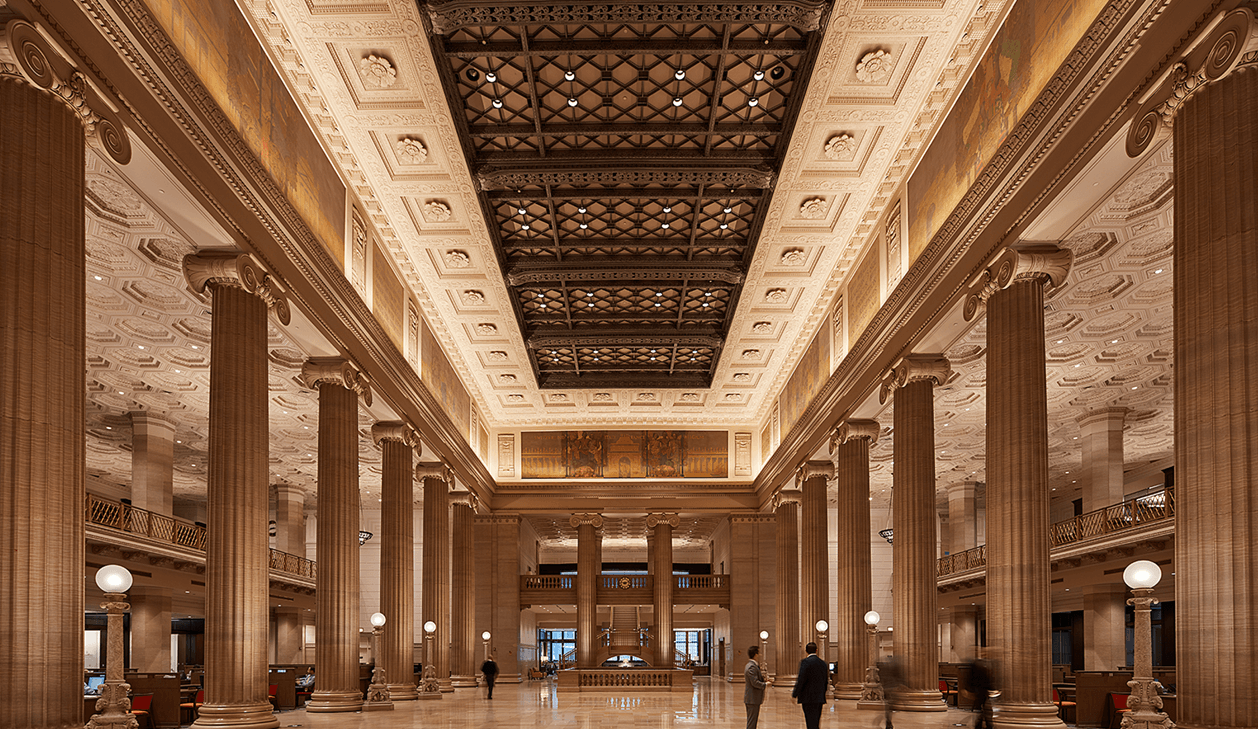Data tokens on this page
What Will the Post-Pandemic Office Look Like?
What Will the Post-Pandemic Office Look Like?
The pandemic has been the great disruptor, affecting how virtually every industry does business. And that's especially true of commercial real estate.
Industry giants like Twitter, Spotify, and Zillow have pledged to stay fully remote in the long term, while Google, Microsoft, and Salesforce have embraced a hybrid workforce. All over the country, companies are rethinking the need for the large "traditional" office and seeking out solutions to support remote workers.
At the same time, companies that struggled due to consumer changes during the pandemic now face potentially-daunting lease renewals. As a result, office building owners have faced lower demand, fewer lease renewals, and even the looming threat of foreclosure if demand doesn't pick back up.
"The big question is, 'Is the pool of tenants getting bigger or smaller?'” Bart Johnson, Market Head for CRE for Wintrust Financial, President of Wintrust Bank at Wintrust recently told Crain’s Chicago Business. "It is definitely a cycle, and we're not at the bottom yet."
Weathering the storm means making a post-pandemic plan for your business and adapting to tenants' ever-changing needs now. Read on to learn more about the seven trends dominating commercial real estate right now so you can strategize and grow your business.
Flexible leasing terms
It's a tenant's market for the time being, and those seeking office space are using their market power to demand flexibility from landlords.
Flexible leasing terms are the top-rated value enhancement in office real estate, according to a 2022 study conducted by Deloitte. Offering flexible leasing terms, like management contracts or revenue-sharing lease models, may help building owners attract top tenants and reduce vacancies.
Adaptable offices
Beyond financial flexibility, tenants crave the ability to adapt the office space to their ever-changing needs. Temporary fixtures — like moveable walls and furniture — will become mainstays in the post-pandemic office, since they allow tenants to turn large open-concept offices into multi-functional workspaces.
Look for a rise in smaller breakout rooms with video technology that allows in-office workers to collaborate with remote colleagues. Businesses will also use shared meeting spaces for larger in-office gatherings, as well as smaller communal spaces for day-to-day collaboration. Finally, look for a rise in space devoted to unassigned seating, hoteling, and hot-desking to accommodate a hybrid workforce.
A focus on sustainability
Sustainable buildings are good for the planet — and they’re also good for business. Research from Deloitte points to sustainability as the top factor that would improve the tenant experience across all CRE subsectors, and the second-most important value-add for office spaces.
Seek out buildings designed with sustainability in mind from the start. Play up the benefits of sustainable materials used in building — for example, smart glass facades that not only let in natural light, but help control the temperature within the building — to attract tenants, and highlight money-saving renewable energy features, such as built-in solar panels.
Floor plans should also be optimized for sustainability. Minimizing service areas helps tenants use their space optimally, while flexible floor plans allow landlords to adapt to a range of tenants’ needs, minimizing waste from renovations between tenants.
Sustainability will take center stage in design and decor, as well. More and more designers will turn to sustainable flooring options, from hardwood to carpet to luxury vinyl tile, and look for furniture and fixtures made with the environment in mind.
Smaller office spaces for large businesses
As remote and hybrid work shifts from a temporary measure to a longer-term solution, many businesses are rethinking the size of their office spaces.
More than four in five large companies (those with more than 10,000 employees) say they plan to downsize their office space over the next three years, and 53% say their new space will be 10 to 30% smaller.
But not every business is downsizing their space. More than two-thirds of medium-size businesses (100 to 9,999 employees) plan to maintain or expand their portfolio, and 40% of small businesses say their office space needs will grow.
How these trends impact your local market depends on the mix of business in your area — but many landlords may find moderately-sized office spaces in demand, as large businesses downsize from more spacious offices while smaller companies plan to upgrade.
Greater investment in technology
An increasingly connected workforce needs technology to work effectively, and offering connected office space can help landlords attract tenants. Conference and meeting rooms with built-in audio and video equipment will become the norm. Adjustable and smart lighting can entice tenants, too, since it provides flexibility to customize their lighting to their needs.
Keyless entry, smart locks, and access control can help tenants feel secure in their space. And software that allows tenants to request repairs or facilities management can enhance the customer experience.
Technology can also help landlords secure tenants. Video or 3D technology that allows tenants to take self-guided tours is on the rise, and may help fill vacancies, especially in times of disruption.
Finally, and most importantly, landlords need to develop a plan to adopt 5G, which will help meet tenants' growing demand for faster connection speeds. Embracing 5G also expands the functionality of smart buildings — so landlords can learn, for example, how to increase the energy efficiency of their building or use the space more effectively.
Health and safety features
The pandemic shone a light on the importance of health and wellness in the workplace. More than 7 in 10 employees say their health and safety at work is more important than ever before, and half say that employers should play a greater role in keeping employees safe, according to a recent MetLife study.
Businesses looking to meet their employees' demands are seeking out office space that will enhance the wellness of their team, creating business opportunities for landlords offering health-friendly buildings.
Keep air quality top of mind in your buildings by investing in air filtration systems that help eliminate dust, pollutants, and microbes while also controlling humidity. Conduct regular air quality tests, and highlight great results to prospective and current tenants.
But consider other safety measures, too. Implement touchless technology solutions, like mobile credentials and hands-free locks, to help minimize the chance that infectious particles will spread.
Allow health to inspire your design and decor decisions as well. Spaces with natural light, decorative plants, and furniture made from antimicrobial materials all make the space conducive to employee wellness.
Wintrust Commercial Real Estate offers a variety of lending solutions with flexible financing and various length term loans. Partner with us today!





